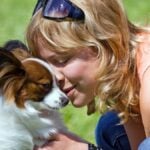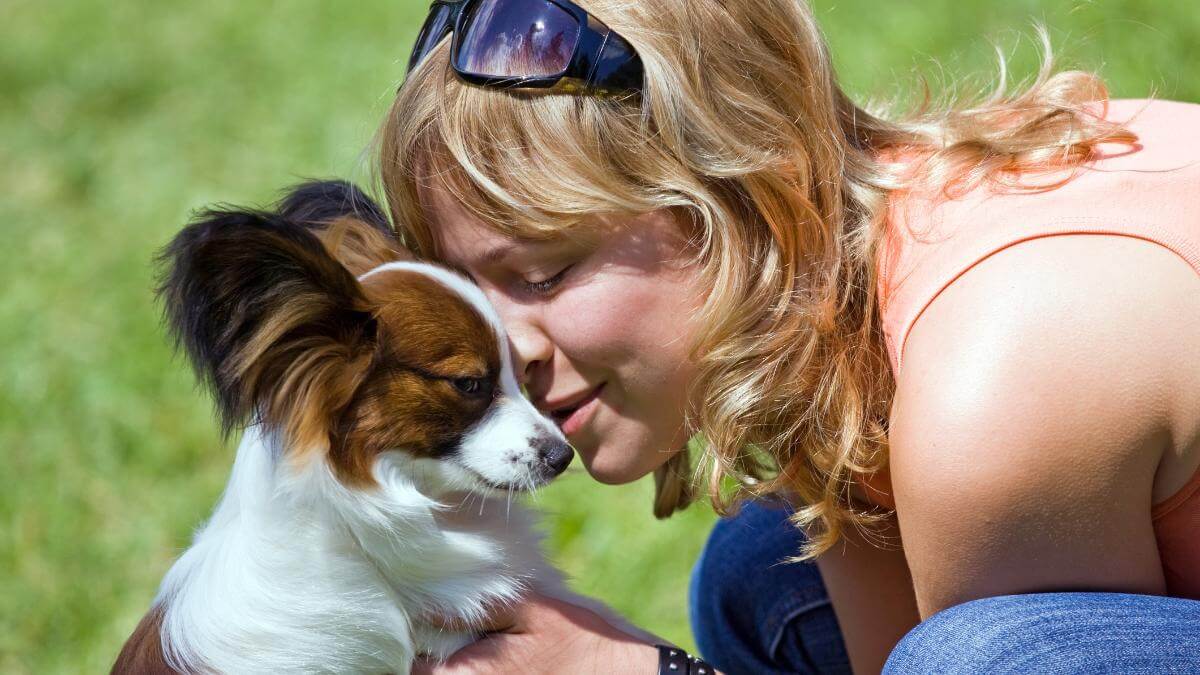
Home » Must-Haves in the Papillon Standard

There are seven MUST-haves in the AKC (American Kennel Club) Papillon Breed Standard. MUST is a very strong four-letter word! This Standard does not use the words “can,” “may,” or “might.” It states MUST. The word MUST means necessary or very important that something happens, and the Papillon Standard uses it very definitively. Let’s look at each of the seven necessary points in the Papillon Standard.
On the head, color(s) other than white MUST cover both ears, back and front, and extend without interruption from the ears over both eyes. The Papillon Standard is very clear on the head markings; the eyes and ears must be covered in color without interruption from the eye to the ear. Anything else is considered a mismark, which the Standard states is a serious fault. Mismarks take away from the butterfly appearance of the Papillon, which is an extremely important part of breed type.
Body MUST be slightly longer than the height at withers. This has been a drag of the breed for a very long time. By definition, the word “slightly” means to a small degree. Papillons should never be long and low. Start by looking at the ground the dog is standing over and then examine the dog on the table. Check to see if the dog is slightly longer from the point of shoulder to the point of buttocks than the withers to the ground. Papillons MUST be slightly longer than tall.
Ears of the drop type, known as the Phalene, are similar to the erect type, but are carried drooping and MUST be completely down. The erect ear should be carried erect and at 45 degrees when alert. They should not be higher than 45 degrees, as this is faulted in the Standard. The ear of a Phalene should not be confused with a soft-eared Papillon, as they should be completely down and drooping.
Forelegs slender, fine-boned and MUST be straight. The slender, fine-boned leg of a Papillon must be straight. There should be no bowing, east/west, or turning in or out of the Papillon leg.
Dewclaws, if any, MUST be removed from hind legs. Dewclaws are optional on the forelegs. However, the rear dewclaws must be removed.
Teeth MUST meet in a scissors bite. The Papillon Standard gives no other option than a scissors bite. Overshot and undershot bites are faulted in the Standard.
Tongue MUST not be visible when jaws are closed. You should not see the tongue of a Papillon sticking out of the mouth or sticking out between a gap made at the incisors when the jaws are closed.
Please remember the MUST-haves in Papillons, as they are all-important to maintain proper Papillon breed type.
